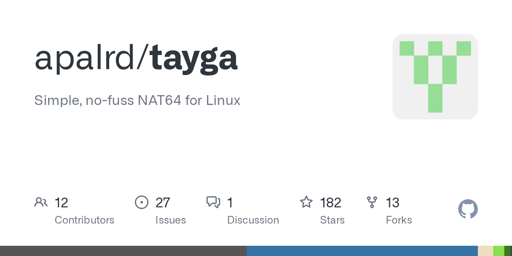- cross-posted to:
- technology@lemmy.world
- cross-posted to:
- technology@lemmy.world
Video creator and IPv6 enthusiast apalrd’s adventures - @apalrd@hachyderm.io - is planning to lead a renewed effort continuing development of the NAT64 translator tayga.
He also made a video comparing different existing open source solutions and demoing tayga on YouTube: https://www.youtube.com/watch?v=WlQH8KubgiA



I’m not saying it should be ignored. “Stateless NAT64” is technically called SIIT and is a mode of operation Jool supports too. I am mostly complaining about terminology here, not usefulness. Tayga is not a NAT64 and has different use cases.
Tayga does Translation of Network Addresses, between IPv4 and IPv6. Compared to Jool, Tayga almost purely does address translation, unburdened by the needs of port translation.
The fact that NAT44 implementations customarily include port translation for TCP/UDP carries little weight on the terminology of IPv6 technologies, the same way that DHCPv6 stripped away the disparate functionalities of DHCPv4 to be more modular and less like a “kitchen sink”, deferring to RDNSS or even outright running in stateless DHCPv6 mode.
Correct, and stateless translation is called SIIT which is the point of my comment. NAT64 traditionally refers to NAPT. Just like how NAT66 traditionally refers to NAPT and stateless 6to6 translation is usually referred to as NPTv6